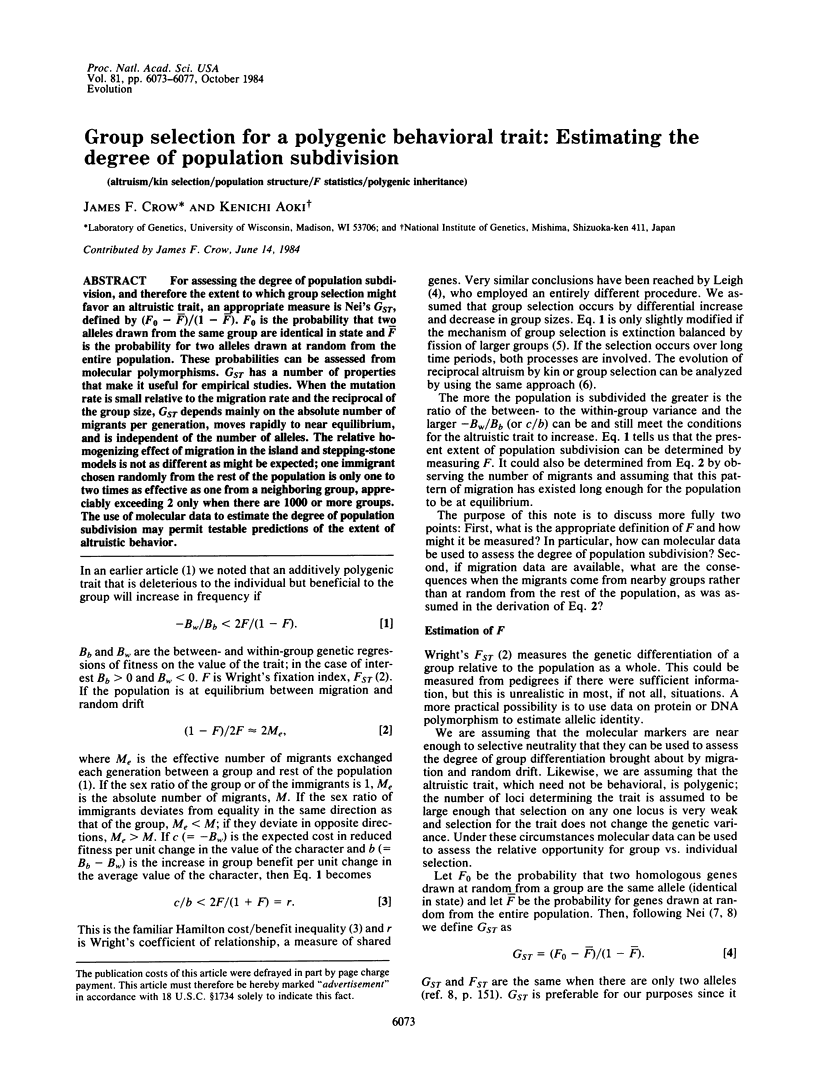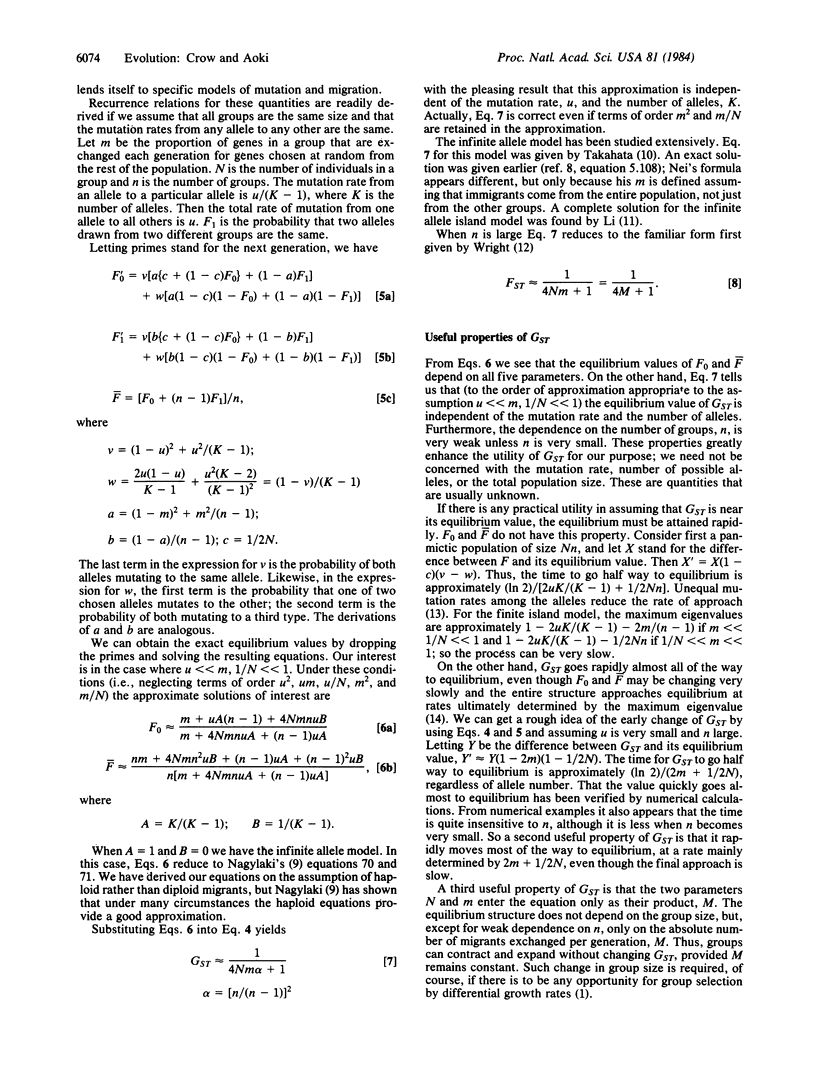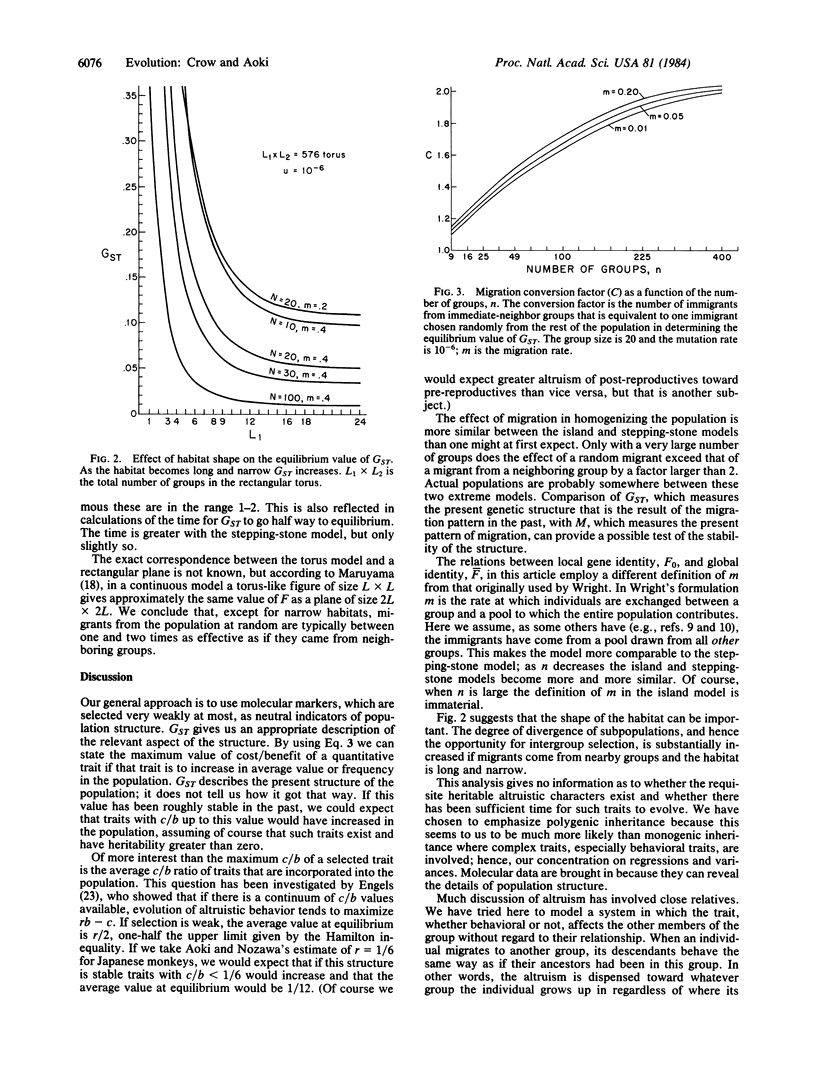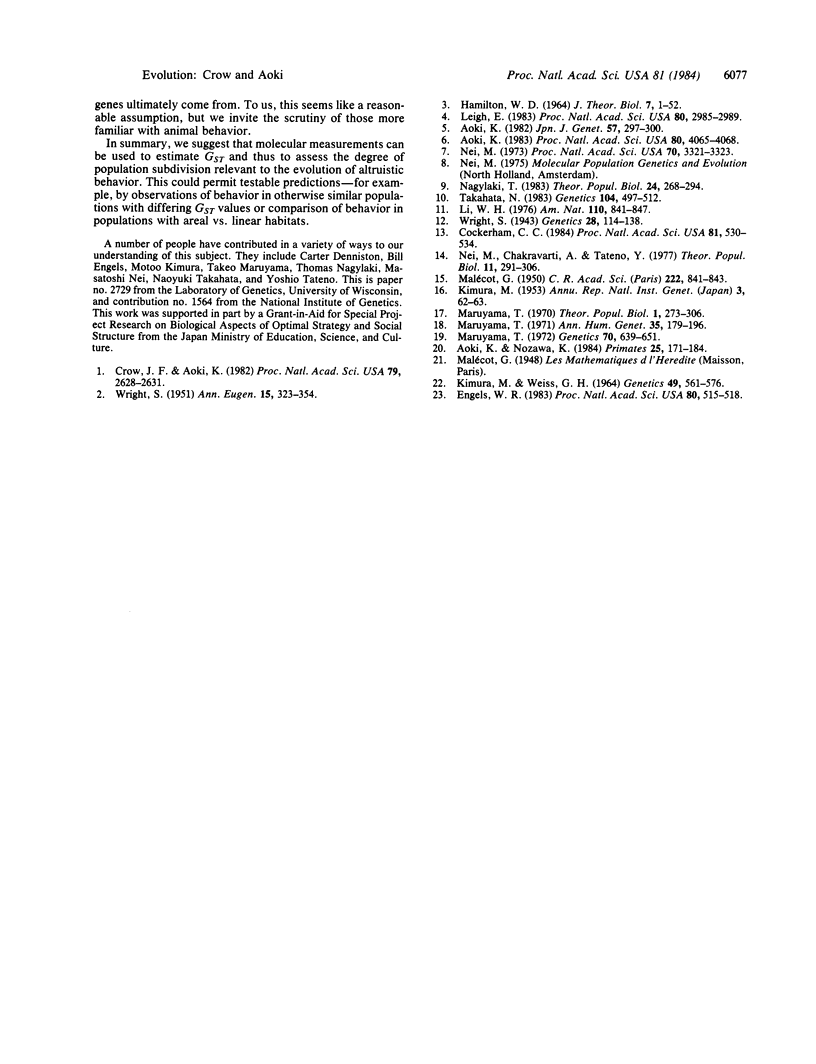Abstract
For assessing the degree of population subdivision, and therefore the extent to which group selection might favor an altruistic trait, an appropriate measure is Nei's GST, defined by (F0-F)/(1-F). F0 is the probability that two alleles drawn from the same group are identical in state and F is the probability for two alleles drawn at random from the entire population. These probabilities can be assessed from molecular polymorphisms. GST has a number of properties that make it useful for empirical studies. When the mutation rate is small relative to the migration rate and the reciprocal of the group size, GST depends mainly on the absolute number of migrants per generation, moves rapidly to near equilibrium, and is independent of the number of alleles. The relative homogenizing effect of migration in the island and stepping-stone models is not as different as might be expected; one immigrant chosen randomly from the rest of the population is only one to two times as effective as one from a neighboring group, appreciably exceeding 2 only when there are 1000 or more groups. The use of molecular data to estimate the degree of population subdivision may permit testable predictions of the extent of altruistic behavior.
Full text
PDF




Selected References
These references are in PubMed. This may not be the complete list of references from this article.
- Aoki K. A quantitative genetic model of reciprocal altruism: a condition for kin or group selection to prevail. Proc Natl Acad Sci U S A. 1983 Jul;80(13):4065–4068. doi: 10.1073/pnas.80.13.4065. [DOI] [PMC free article] [PubMed] [Google Scholar]
- Cockerham C. C. Drift and mutation with a finite number of allelic states. Proc Natl Acad Sci U S A. 1984 Jan;81(2):530–534. doi: 10.1073/pnas.81.2.530. [DOI] [PMC free article] [PubMed] [Google Scholar]
- Crow J. F., Aoki K. Group selection for a polygenic behavioral trait: a differential proliferation model. Proc Natl Acad Sci U S A. 1982 Apr;79(8):2628–2631. doi: 10.1073/pnas.79.8.2628. [DOI] [PMC free article] [PubMed] [Google Scholar]
- Engels W. R. Evolution of altruistic behavior by kin selection: an alternative approach. Proc Natl Acad Sci U S A. 1983 Jan;80(2):515–518. doi: 10.1073/pnas.80.2.515. [DOI] [PMC free article] [PubMed] [Google Scholar]
- Hamilton W. D. The genetical evolution of social behaviour. II. J Theor Biol. 1964 Jul;7(1):17–52. doi: 10.1016/0022-5193(64)90039-6. [DOI] [PubMed] [Google Scholar]
- Kimura M, Weiss G H. The Stepping Stone Model of Population Structure and the Decrease of Genetic Correlation with Distance. Genetics. 1964 Apr;49(4):561–576. doi: 10.1093/genetics/49.4.561. [DOI] [PMC free article] [PubMed] [Google Scholar]
- Leigh E. G. When does the good of the group override the advantage of the individual? Proc Natl Acad Sci U S A. 1983 May;80(10):2985–2989. doi: 10.1073/pnas.80.10.2985. [DOI] [PMC free article] [PubMed] [Google Scholar]
- Maruyama T. Analysis of population structure. II. Two-dimensional stepping stone models of finite length and other geographically structured populations. Ann Hum Genet. 1971 Oct;35(2):179–196. doi: 10.1111/j.1469-1809.1956.tb01391.x. [DOI] [PubMed] [Google Scholar]
- Maruyama T. Effective number of alleles in a subdivided population. Theor Popul Biol. 1970 Nov;1(3):273–306. doi: 10.1016/0040-5809(70)90047-x. [DOI] [PubMed] [Google Scholar]
- Maruyama T. Rate of decrease of genetic variability in a two-dimensional continuous population of finite size. Genetics. 1972 Apr;70(4):639–651. doi: 10.1093/genetics/70.4.639. [DOI] [PMC free article] [PubMed] [Google Scholar]
- Nei M. Analysis of gene diversity in subdivided populations. Proc Natl Acad Sci U S A. 1973 Dec;70(12):3321–3323. doi: 10.1073/pnas.70.12.3321. [DOI] [PMC free article] [PubMed] [Google Scholar]
- Nei M., Chakravarti A., Tateno Y. Mean and variance of FST in a finite number of incompletely isolated populations. Theor Popul Biol. 1977 Jun;11(3):291–306. doi: 10.1016/0040-5809(77)90013-2. [DOI] [PubMed] [Google Scholar]
- Takahata N. Gene identity and genetic differentiation of populations in the finite island model. Genetics. 1983 Jul;104(3):497–512. doi: 10.1093/genetics/104.3.497. [DOI] [PMC free article] [PubMed] [Google Scholar]
- Wright S. Isolation by Distance. Genetics. 1943 Mar;28(2):114–138. doi: 10.1093/genetics/28.2.114. [DOI] [PMC free article] [PubMed] [Google Scholar]


